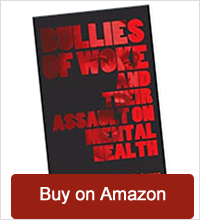Tale Number One
I have had the pleasure of being in and out of emergency rooms, in Canada and America, for the past 20 years after a doctor made an error that left me with a colostomy bag for six months. Following all the surgeries, I developed repeated intestinal blockages because of scar tissue. Let’s say the pain out of 10 was usually somewhere around 15. I require antibiotics and morphine – morphine first.
My last visit to my local hospital was in 2018; three times in one month to finally get my intestinal problem solved. I learned, sadly, from experience that the best way to get care is to come by ambulance, which means I wait until the pain is pushing 8. A few weeks ago I felt that familiar pain, again. We called the emergency room to find out the protocol. I had to be dropped off outside the emergency department and go by myself into the emergency waiting room and be seen by the nurse, and then wait for a bed in the emergency department. Unless this hospital has redone its emergency room, no medical staff can see what is going on in that room. I have collapsed from pain in an emergency room; I have thrown up.
Now, there are exceptions to these rules. If you are under 18, you can have someone accompany you. If you have dementia or special needs – maybe. The decision to allow someone to stay with you is made by the screener of the day who takes your temperature, asks some questions, sanitizes you and provides a mask. Terrific. It’s all about preventing the spread of Covid.
I can’t say this enough, and I said it to my patients (I am a hospital Chaplain) in hospital, do not leave loved ones alone in the emergency room, especially if they are in great pain, cannot speak for themselves and are elderly! You never want to be alone in an emergency room. It is not as if we are overflowing with medical personnel at the hospital ready to help when needed. How does this behaviour fit in with DO NO HARM? Wonder when these experts on Covid last sat in an emergency room?
Because of that policy I decided to wait. I would wait and see if my pain hit 10 out of 10, because my bowel perforated, and then call an ambulance. I knew then that I would not be left alone at the hospital. Think about that. If I had perforated I would require more treatment, a longer stay in hospital and unneeded pain. But that‘s Covid for you. Don’t think for a minute that people are not going to the hospital just because they fear getting Covid. They don’t go out of fear of being alone.
It could have been worse. I had been by the ambulatory care entrance a few weeks prior and watched as people with casts on crutches, new mothers with babies, elderly on walkers, stood outside, 2 metres (six feet) apart, waiting to go in. That day it was relatively warm. Maybe 0 degrees Celsius. Wonder what happens when it is -12 degrees C?
How is the spread of Covid kept in check by not allowing a friend or family member to be screened and then stay with that patient? I’d like to see the science and statistics on that. I’d like to see all kinds of science on so many decisions. Five people in a room is safe, six are not. Playing golf is OK but skiing and hockey, not so much.
I want to live long enough to see those who ran these Covid protocols be brought to trial; to explain their actions, to those of us who did not go to hospital and to all those who suffered terribly because they were not considered essential.
Tale Number Two

Who will live and who will die? Depends.
I met a woman with four adult children. One of her daughters is an alcoholic, like her father. She is in her early twenties. She has a partner and a baby. She has been sober for 3 years. Well done. Except, her life is not that important, right now, during Covid. She is not essential. So her meetings are not that important. Like most members of AA they meet in Churches. All kinds of churches and synagogues. Places of worship open their doors to the weakest. One can attend a meeting every day of the week. But the Houses of Worship had to be closed. Not Walmart or Costco. Perhaps they should have opened their doors to AA meetings.
This brave young woman has lost 9 friends to suicide.
In March 2020, Alcoholics Anonymous “temporarily” closed many of its meetings across Canada in an effort to curb the spread of COVID-19. Well that temporary closure is still in force. Alcoholics are non-essential. See how easy it is to categorize people then do with them as you wish?
This will come as no surprise. Studies have shown that people who have problems with alcohol have a suicide rate up to 10 times higher than others. Forty percent of people who received treatment for a drinking problem report having tried suicide at least once. Men are at a higher risk than women. Doctors think that people struggling with alcohol and thinking about suicide may have a lower risk of suicide if they just quit drinking. And they did. With the help of AA.
Not to worry. There are Zoom meetings. Great. (This comes from July 2020). While they are certainly useful, they do not replace in-person meetings. AA is an anonymous group with no central authority. AA is not a priority on any government’s to-do list, and when churches and community centres closed, all AA meetings got cancelled.
Online discussions lack much of the intimacy of in-person meetings.
“You certainly don’t get the hugs,” Jo said.
Before COVID, members could strike up conversations in the lobby or parking lot and reflect on the meeting, offer personal advice or an affirmation someone was not alone in their experience.
“If you’re at a meeting, you have clusters of people standing around when the meeting’s over,” Jo said. “You don’t get that on a Zoom meeting.”
While the move online has opened doors for newcomers, it has shut others out, including those without the hardware or technological know-how to join meetings online. In this sense, the reach of programs like AA hasn’t broadened so much as it has shifted.
“There’s the potential that some people are getting left behind with this shift,” said Dr. Bryce Barker, an alcohol expert from the Canadian Centre on Substance Use and Addiction. “That’s a real concern.”
I was told that where in-person meetings take place, with a limited number, of course, when someone new comes in, one of the “regulars” will leave. It is called caring for the other because to AA members all people are essential.
The main issue is that people might be left without proper support — including peer support groups or health-care professionals — when they need it most.
This report comes from July 2020.
Dr. Erin Hobin, a scientist at Public Health Ontario and the co-author of the study on alcoholism said that there was no clear, coordinated national guidance for how best to control alcohol during the pandemic, but suggested that a study of how different jurisdictions handled relaxations and restrictions may provide information for better evidence-based policies in the future.
“There are a lot of factors that need to be considered when making decisions about how best to control alcohol during a pandemic,” said Hobin.
“Keeping alcohol retailers open and deeming them an essential service during the pandemic (emphasis mine) was generally supported by health experts and substance use disorder specialists because of people living with alcohol dependence need to have access to alcohol to avoid serious consequences of withdrawal,” said Hobin, “however, if alcohol retailers are deemed an essential service is that signalling to the public that alcohol is an essential commodity or product?”
In April the Canadian Centre on Substance Use and Addiction study found 25 per cent of Canadians between the ages of 35 and 54 reported an increase in the amount of alcohol they drank during isolation. According to a new study released by the Canadian Journal of Public Health, there is a strong correlation between exposure to mass traumatic events and increased alcohol consumption and related harms both in the short term and for one to two years after a crisis.
So providing alcohol is essential; helping alcoholics – not so much. Hmmm
According to the Wall Street Journal, the Centers for Disease Control and Prevention reported 475,000 excess deaths in the U.S. at a time when it was reporting 281,000 coronavirus-related fatalities. The difference is 194,000 additional deaths unexplained by normal mortality and COVID-19 combined. Could this be the butcher’s bill from a folly that has produced skyrocketing suicides, drug and alcohol deaths, domestic homicides, isolation-related deaths, delayed health screenings, delayed health treatments, and poverty-related deaths?
So to conclude, when you allow people in power to decide who is essential and who is not, they decide who is worth sacrificing for the “greater good.”
From the Ethics of the Fathers: “Rabbi Tarfon used to say, it is not incumbent upon you to complete the task, but you are not exempt from undertaking it.”


